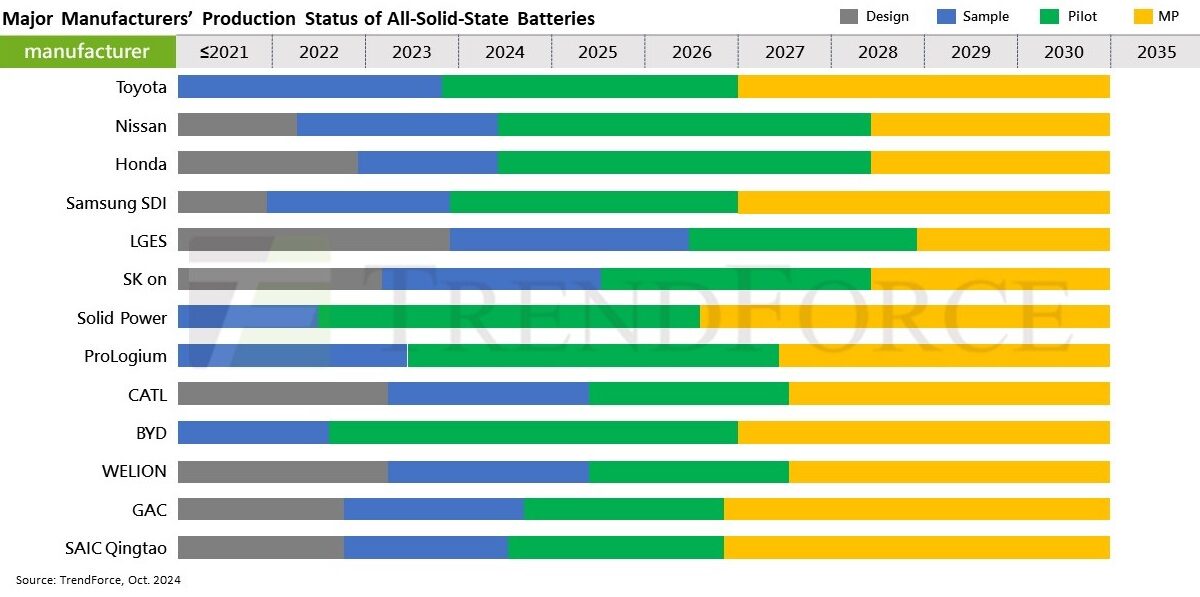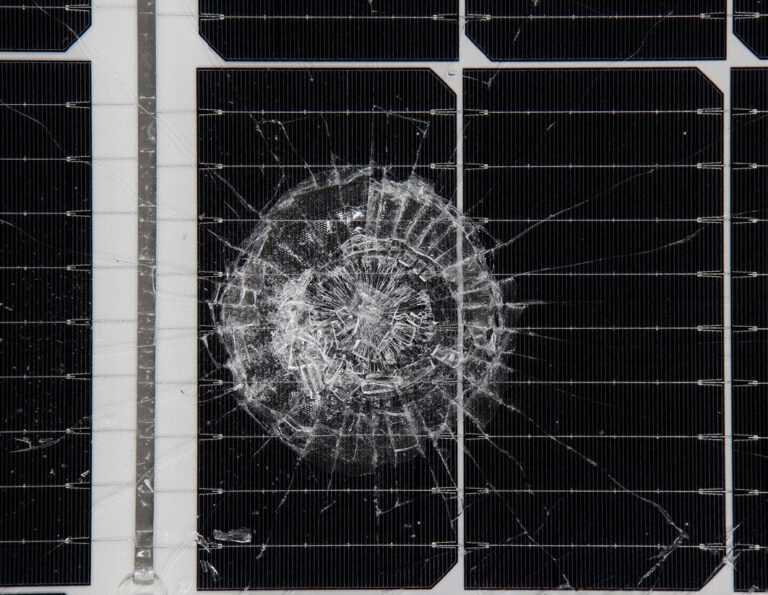With hailstorms severely damaging solar panels in Australia and the United States – including golf ball-sized hail at the 350 MW Fighting Jays project in Texas in March 2024 – insurers are increasing premiums and reducing or canceling hail coverage. Everoze partner Simon Mason discusses the challenges the sector faces in minimizing exposure to hail risks.
Printed edition 24/10 from pv magazine
Modules are the main point of failure for solar projects during hailstorms. With wafers increasing in size from M6 (166 x 166 mm) to M10 (182 x 182 mm) and G12 (210 x 210 mm), panel sizes have grown from 1 m by 2 m to 1.3 m by 2.3 m and larger. Thin frames and glass may have helped lower prices, but they also mean less resilient products.
Recent Australian solar projects include bifacial panels with 2mm thick front and back glass. Normally certified to the International Electrotechnical Commission (IEC) minimum test standards, for an ice ball resistance of 25mm, they can usually pass the 35mm sprinkle tests. Heavy Australian hailstorms have always included hailstones larger than 35mm, and climate change is making such events more common and damaging.
Some laboratories have introduced more stringent, customized tests that go beyond the minimum IEC requirements. As a result, some manufacturers offer a custom BOM with a 2.5mm glass front and back. This greater glass thickness results in a weight saving, but in many cases the modules can withstand a 45 mm sprinkle test.
Manufacturers have also released “hail-resistant” modules with 3.2mm glass on the front and 2mm or 1.6mm glass on the back, which can pass hail tests of 50mm and in some cases 55mm. Those modules are heavier and in a market like Australia, where health and safety manual control restrictions make it prohibitively expensive to use panels weighing more than 40kg, the size (and power rating) of such panels that can be used are limited.
Shelving selection
In areas where heavy hailstorms occur, on projects using trackers, the use of a hail storage mechanism can significantly reduce the number of panels damaged during such weather. By tilting the panels away from the incoming hail direction, the impact angle can be increased and the impact energy reduced. Most major tracker manufacturers now offer a hail storage feature in their products and this feature should be included in employer requirements for new projects.
Fixed tilt projects cannot count on a smart storage strategy. Regardless of which racking system is used, the structural design must also take into account the additional weight of the modules to ensure sufficient strength and stiffness.
A 2023 study by the University of Queensland and the Australian Bureau of Meteorology identified the southeastern corner of Queensland and the northern coast of New South Wales (NSW) as the most hail-prone parts of Australia. Those areas include the Central West Orana and New England renewable energy zones (REZs) under development in NSW, as well as the Southern Downs, Western Downs and Darling Downs REZs in Queensland. The Australian Energy Market Operator’s draft integrated system plan for 2024 envisions those areas hosting up to 14 GW of new solar energy by 2040.
Similar studies in other regions illustrate the importance of considering hail and, more generally, environmental risks at an early stage of project development. Knowing the expected climate risks allows developers to choose the best equipment for a location, reducing risks and ensuring the long-term bankability of portfolios.
At the tender stage it is important that sprinkles testing is carried out by reputable independent testing and certification bodies, and that this is included in the employer’s requirements for new projects. In general, good sourcing should include a factory audit and a series of tests beyond IEC standards, both before shipment and upon receipt on site.
Insurance issues
For a developer, it is efficient to have as much generation capacity as possible in the same geographic area. Everyone likes to expand a project into the second or even third phase, but for an insurer, such geographical concentration increases the risk of large losses.
Beyond the technical measures discussed above, developers can seek to purchase insurance at the portfolio level rather than at the project level to leverage portfolio size and geographic diversity. This can be a way to increase the available coverage for projects in hail-prone areas at a manageable cost. Developers who spread their projects across multiple locations will be able to avoid concentration risk and perhaps pursue an insurance strategy at the portfolio level.
Future planning
Anticipating the impact of a hailstorm is no easy task. Developers should carefully consider the location of projects within a broader portfolio context and ensure that design and procurement decisions are made with adequate consideration of hail risk and the mitigation strategies discussed above.
Ensuring the sustainability of PV developments requires a range of skills, including planning and defining an insurance strategy, as well as good design, engineering and procurement. Using a thoroughly conducted climate risk assessment that evaluates and mitigates the commercial and financial impact on operational expenditure, revenue or project duration from the early stages of development, this should ultimately help keep the needs of future lenders manageable.
About the author: Simon Mason is a partner at Everoze, a technical and commercial energy consultancy specialized in renewable energy sources, energy storage and flexibility. He is a founding member of Everoze’s Australian branch and has been working on large-scale solar, battery energy storage and wind projects in Australia and South East Asia since 2008.
This content is copyrighted and may not be reused. If you would like to collaborate with us and reuse some of our content, please contact: editors@pv-magazine.com.
Popular content



